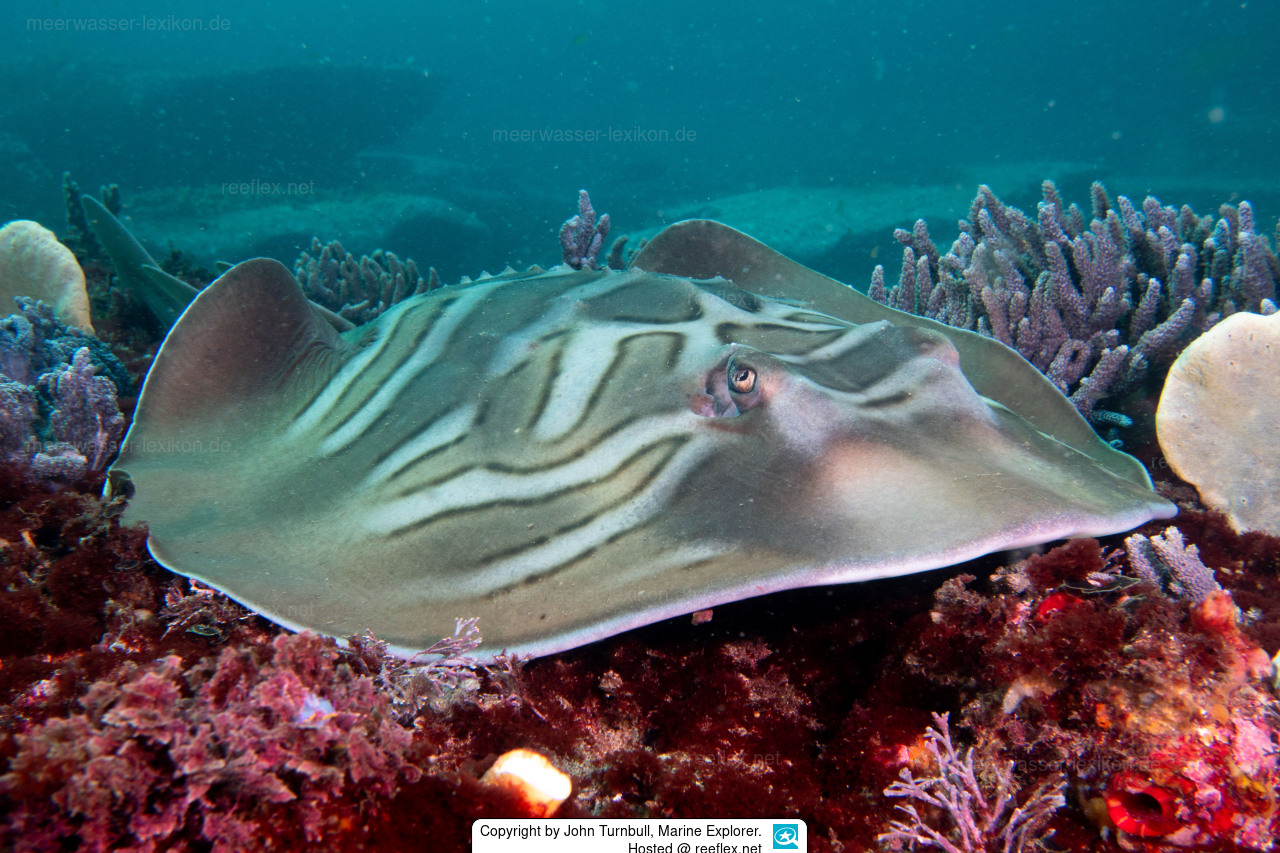Info
Müller & Henle, 1841
A large brownish to greyish fiddler ray with an almost oval-shaped disc and a broadly rounded snout. The Eastern Fiddler Ray is easily identified by the pattern of broad lilac-coloured dark-edged bands including a triangular or diamond-shaped marking on the head just behind the eyes.
Around Australia there are eastern fiddler rays (around Sydney) and southern fiddler rays (around Melbourne). The patterning is slightly different.
Common near the coast, on sandy bottoms and seagrass areas, often near rocky reefs. Ranges from the intertidal to 180 m. Ovoviviparous with golden egg capsules, each with up to 3 embryos.
Distribution: Endemic to Australia
Synonyms:
Rhinobatus dumerilii Castelnau, 1873
Trygonorhina fasciata Müller & Henle, 1841 (misspelling)
Trygonorhina fasciata guanerius Whitley, 1932
Trygonorhina guaneria Whitley, 1932
Trygonorhina guanerius Whitley, 1932
Trygonorrhina guaneria Whitley, 1932
Trygonorrhina guanerius Whitley, 1932
A large brownish to greyish fiddler ray with an almost oval-shaped disc and a broadly rounded snout. The Eastern Fiddler Ray is easily identified by the pattern of broad lilac-coloured dark-edged bands including a triangular or diamond-shaped marking on the head just behind the eyes.
Around Australia there are eastern fiddler rays (around Sydney) and southern fiddler rays (around Melbourne). The patterning is slightly different.
Common near the coast, on sandy bottoms and seagrass areas, often near rocky reefs. Ranges from the intertidal to 180 m. Ovoviviparous with golden egg capsules, each with up to 3 embryos.
Distribution: Endemic to Australia
Synonyms:
Rhinobatus dumerilii Castelnau, 1873
Trygonorhina fasciata Müller & Henle, 1841 (misspelling)
Trygonorhina fasciata guanerius Whitley, 1932
Trygonorhina guaneria Whitley, 1932
Trygonorhina guanerius Whitley, 1932
Trygonorrhina guaneria Whitley, 1932
Trygonorrhina guanerius Whitley, 1932







 Dr. John Turnbull, Marine Explorer, Australien
Dr. John Turnbull, Marine Explorer, Australien






